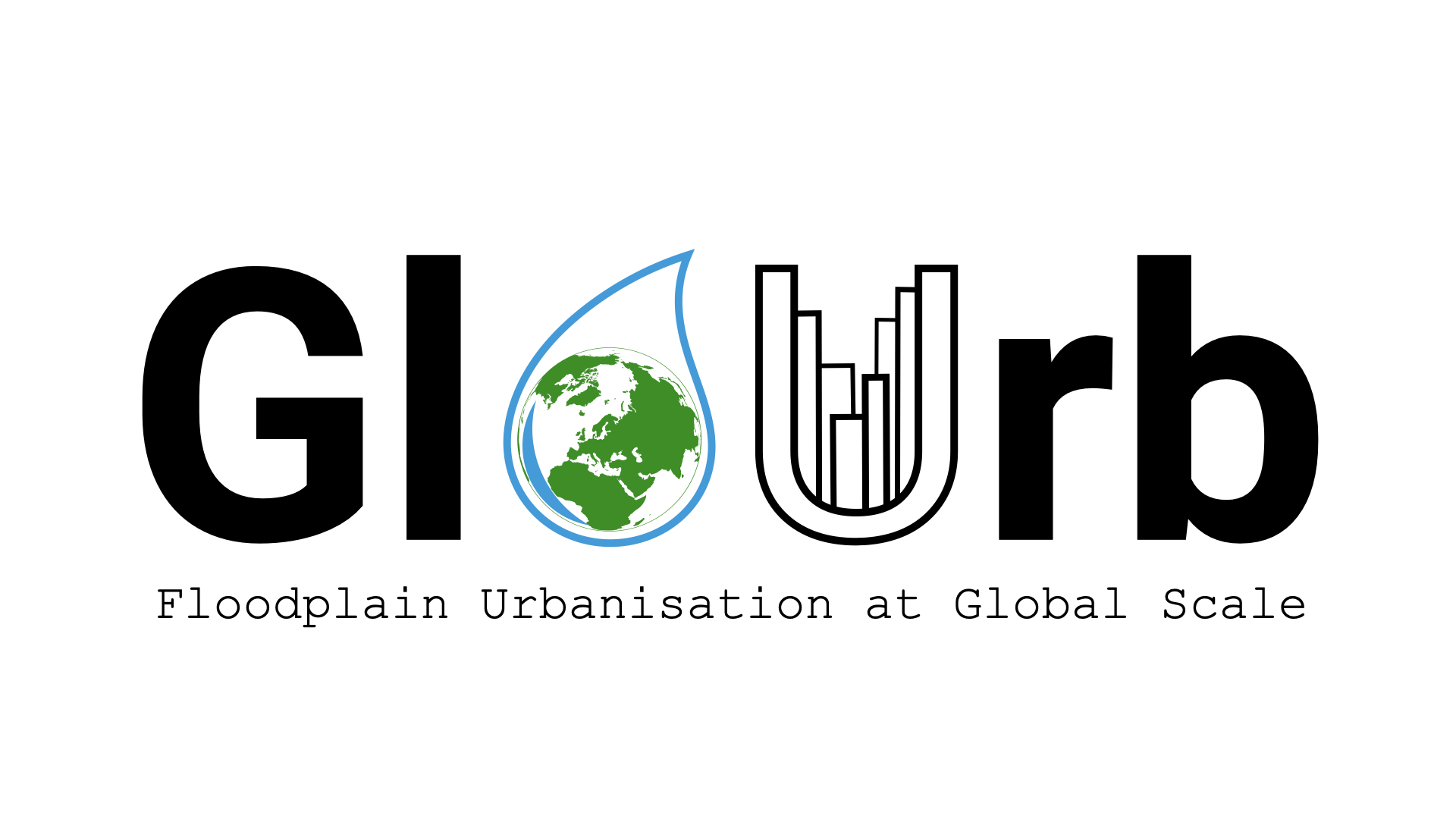- About
- Partners
- Global Case Studies
-
Results
- Results
- Abstracts
- Conferences
- Master thesis
- Data and scripts
- Events
GloUrb is mainly focused on large agglomerations around the world hosting more than 300k inhabitants and located in floodplains. The study sites are selected progressively during the project life, according to a top-down, stratified and multi-scale approach (from global to local): selection n°1=300 sites; selection n°2=30-50 sites, selection #3=5-10 sites.
Selection procedure
From 1980 agglomerations with more than 300,000 inhabitants (UN 2018), the first step was to identify agglomerations located on floodplains or near rivers with a width greater than 30 m, by combining topographic (Nardi et al., 2019) and cartographic (Allen & Pavelsky, 2019) data.
Following this first step, these agglomerations were characterized on the basis of geographical and physiographical variables (altitude, land use, city size, lowland percentage, biomes), hydro-climatic (precipitation, climate, flow rates) and socio-economic (total and average number of inhabitants, population density, population growth, HDI). These data were extracted or calculated from several existing global databases, including HydroSHEDS, GHSL and others. The spatial unit considered here is the urban center of the GHS-SMOD layer produced by the European Commission's Joint Research Centre (v. 2019).
In the second step, a typology was produced by hierarchical classification and an unsupervised selection was made on the basis of 10 classes and according to the representativeness of each biome in the different geographical zones (Europe, Africa, Asia, Oceania, America).
In the third step, based on the selection above, the various thematic sections of the project then proposed a selection of around 300 towns, according to the specific objectives within each section (landscape structures, web discourse, biodiversity) and the data available (WP2 and WP3).
Finally, a 4th step will involve the selection of 5 to 10 agglomerations for a more detailed analysis of social consequences and environmental justice (WP3).
Selected sites
993 agglomerations on alluvial plains were identified (step 1). These correspond to “Selection 0” (from the web application GloUrbapp). For each agglomeration, it is possible to know the associated characteristics, to visualize its location and to know the class to which it belongs (step 2).

For the topics “landscape structures” and “web discourses”, around 300 agglomerations were selected in step 3. For the “biodiversity” topic, the available data at global scale only allowed us to select around a hundred towns.
The sample for stage 4 will focus particularly on Latin American cities, notably for the comparative study of current legislation on pollution and sediment extraction issues.
For further details and information on the sites selected and the project results progress, check the GloUrbapp application regularly: https://isig-apps.ens-lyon.fr/apps/glourb/glourbapp/








